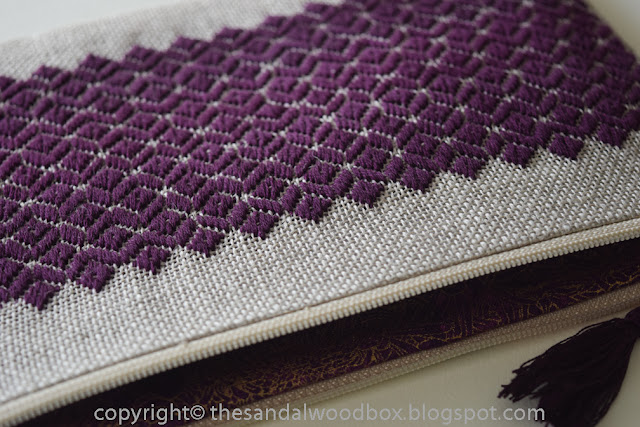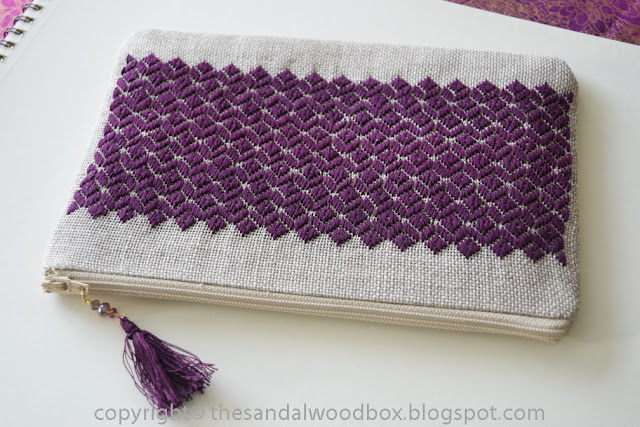Shibui (adjective), Shibumi (noun), and Shibusa (noun): A Japanese word which refers to a
particular aesthetic of simple, subtle, and unobtrusive beauty. Shibui objects
appear to be simple overall but they include subtle details, such as textures,
that balance simplicity and complexity, producing timeless tranquility. The seven elements of shibusa are simplicity, implicity, modesty, silence, naturalness, everydayness, and imperfection.
Remember the Japanese Sashiko embroidery
piece I worked on recently?
Extending my exploration of
embroidery from Japan, Kogin embroidery caught my eye. Kogin embroidery is a
Japanese form of pattern darning similar to Sashiko, which is considered to be a
form of quilting. It originated in the Honshu province of northern Japan and
this method of pattern darning was designed to add bulk and warmth to clothing.
Historic Kogin designs can be quite complex and often richly decorate the
fabric.
Kogin patterns are comprised of
straight stitches, similar to the much better known sashiko, but with a few key
differences. Unlike sashiko, Kogin is often done on even-weave fabric like Aida
or linen, the same kind of fabric you might use for cross stitch. The straight
stitches can be of varying length and are arranged to form symmetrical motifs
and repeating patterns. When doing Kogin, the threads need to be thick enough
to fill the holes in the canvas, otherwise it looks too skimpy.
Historically in Kogin embroidery
the stitches are done with a thick white cotton thread on indigo fabric. Most
modern Kogin examples I have seen are monochrome, generally wool or cotton is used, and as the color scheme has
expanded. This embroidery was originally a simple contrast of plain thread on a
dyed fabric, but from that progressed to diagonal stripes, herringbone
patterns, and then diamond shapes. This spontaneously generated design is the
fundamental component of Kogin embroidery. With the use of methods to make a
beautiful pattern appear within the diamond outline, the embroidery becomes
truly exquisite. There are 30 of these patterns commonly used, and when
combined with different border patterns there are an endless number of
possibilities.
I chose traditional Kogin embroidery hemp linen for this project. Embroidering this was a mix of easy and complicated at times. The hemp linen though rough in texture was very delicate and loosely structured as the weave is a looser weave. And I had difficulty with the pattern and stitching as well. With the looser weave it was difficult counting spaces for my stitches. I had initially chosen a much detailed pattern but after a few attempts realized I needed to choose something a bit simpler for my first try.
I completed my Kogin piece into a small zippered pouch and chose a complimentary Japanese patterned fabric for the lining (that you see in the above photo) and added a tassel made with some glass beads and yarn.
Do check out this site for some
cool information on Kogin embroidery:
https://www.google.com/culturalinstitute/beta/exhibit/PwLS55VaVTzcJA












